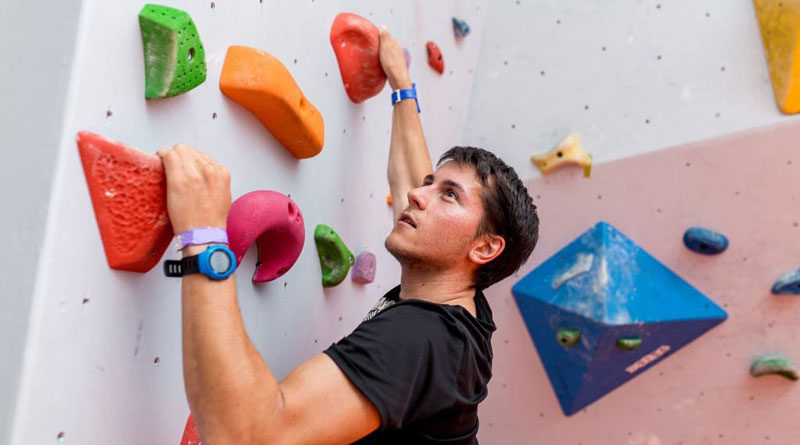Bouldering vs. Lead Climbing: The Differences
Bouldering and lead climbing may seem similar but there are distinct differences between the two styles that make them unique. In this blog, I will demonstrate the differences between these two types of climbing. I will also highlight the advantages and disadvantages of each style. So keep reading to learn more.
Bouldering
It is a type of climbing in which short routes or “problems” are climbed on a rock or artificial climbing wall without the use of ropes or harnesses. Bouldering problems are usually shorter than traditional rock climbing routes, with climbers ascending no higher than 20 feet. Bouldering focuses on strength, technique, and problem-solving because climbers must navigate complex movements and holds to complete a problem.
Advantages and Disadvantages
Bouldering requires less equipment than other climbing styles. You only need climbing shoes, chalk, and a crash pad for protection. Bouldering can also be done indoors or outdoors.
Bouldering, however, has some disadvantages. There is always a chance of injury and fall. You rely solely on your own strength and technique to stay safe.
Equipment Needed
To start bouldering, you need less equipment compared to lead climbing. You need climbing shoes because they provide the necessary grip and support to navigate the wall’s holds. Chalk is also necessary because it keeps your hands dry and improves grip. Finally, a crash pad is required for cushioning and protection in the event of a fall.
Techniques and Skills Required
Bouldering requires a blend of physical strength, technique, and problem-solving abilities. You must have a strong understanding of your body position and balance in order to navigate the wall’s holds. Also, you should be able to read and interpret the route because each problem is unique and requires a different approach. Bouldering also requires mental toughness. Because you must be able to push through difficult moves while dealing with frustration and fear.
Lead Climbing
Lead climbing (also known as sport climbing) involves ascending a pre-determined route on a rock or artificial climbing wall with the help of ropes and harnesses. Unlike bouldering, you climb higher routes with more complex holds with an emphasis on endurance and mental strength in addition to technique and strength.
Advantages and Disadvantages
It allows you to push your limits and climb longer and more complex routes than bouldering. Lead climbing is also more secure and safe because you are attached to ropes and harnesses and have a belayer to control the rope and catch them if you fall. It requires more equipment and experience, making it less accessible than bouldering.
Equipment Needed
A harness, rope, quickdraws, carabiners, and a belay device are all required for lead climbing. You also need climbing shoes and chalk for support and grip. Lead climbing also requires the presence of a partner or belayer who is trained in proper belaying techniques and can ensure your safety throughout the climb.
Techniques and Skills Required
Physical strength, endurance, and mental toughness are all required for lead climbing. You must also be able to manage your energy and pace yourself throughout the climb because lead climbing requires more endurance than bouldering. Mental toughness is also required in lead climbing because you must overcome fear and anxiety to reach the summit. Finally, understand proper belaying techniques and communicate effectively with your partners to ensure safety throughout the climb.
Which One to Choose?
There are several factors to consider when deciding between bouldering and lead climbing. Personal preferences and goals, physical ability and fitness level, and the availability of resources and access to climbing gyms are among them.
Personal Preference and Goals
When deciding between bouldering and lead climbing, consider your personal preferences and goals. Bouldering is a good sport for people who like problem-solving and short, intense workouts. It is also good for you if you prefer to climb alone. Lead climbing, on the other hand, is ideal for those who prefer longer and more complex routes.
Physical Ability and Fitness Level
You must be able to move your body weight quickly and efficiently when bouldering. This requires a high level of strength and power. Lead climbing, on the other hand, requires more endurance and mental toughness. It is a better choice for those with good cardiovascular fitness and energy management skills.
Availability of Resources and Access to Climbing Gyms
Finally, consider the availability of resources and access to climbing gyms. Bouldering can be done outside but in some areas, access to bouldering areas is limited. Lead climbing usually requires the use of a climbing gyms.
Conclusion
To conclude, bouldering and lead climbing are both challenging and rewarding forms of climbing but they differ in several ways. Bouldering is a shorter sport that requires more strength and power, as well as a greater emphasis on individual problem-solving. Lead climbing, on the other hand, involves longer and more complex routes, more endurance and mental strength, and teamwork with a belayer. When deciding between bouldering and lead climbing, consider your personal preferences and goals, your physical ability and fitness level, and your access to resources like climbing gyms. Finally, the decision between the two climbing styles should be based on what best suits an individual’s abilities and goals. Both styles present distinct challenges and rewards, and you can benefit greatly from exploring both.




